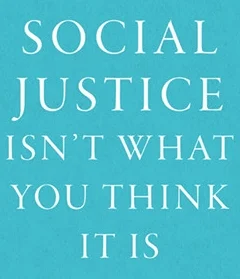Biblical Authority After Babel - A Review
In the year Protestants are commemorating the 500th anniversary of the Reformation, many tend to review the Reformation as either an unchristian schism or a tragic necessity. These sentiments tend to obscure a more positive view that the Reformation was a much needed liberation of Christendom from the hegemonic theological and doxological distortions of the Roman Catholic branch of Christianity. As a result, a common mood is for Protestants to wring their hands and confess to divisiveness while Roman Catholics wag their finger at the destructive individualism and doctrinal plurality they argue is the necessary result of the five solas Reformation and the theological recovery movement known as the Reformation. Liberal Christians, both those who claim continuity with Roman Catholicism and those who chart their course by revising other theological traditions, tend to see the interpretive plurality that resulted from the Reformation as an indication that the main principle of the Reformers—namely, sola scriptura—is a fundamental failure and that Scripture is an insufficient foundation upon which to build Christianity.
In Biblical Authority After Babel: Retrieving the Solas in the Spirit of Mere Protestant Christianity, Kevin Vanhoozer makes a positive case for Reformed Christianity built upon a robust development of the five solas. Vanhoozer unpacks his apology for Mere Protestant Christianity in five chapters with a separate introduction and conclusion. This book is a modified version of a series of lectures given a Moore College, the result is a more conversational and accessible volume than some of Vanhoozer’s other work, which is to say that this volume combined Vanhoozer’s academic rigor with clear, readable prose to create a much-needed tool and treasure for contemporary Protestants.
The body of this volume is comprised of five chapters in addition a substantive introduction and conclusion. Each of the five chapters highlights one of the five solas of the Reformation, though, as is clear from the title of the book, there is one sola to rule them all. Since sola scriptura is at the heart of true Protestantism, that idea functions as the glue that holds the entire volume together.
In the introduction, Vanhoozer begins by addressing the elephant in the room in considerations of contemporary Protestantism: Can separating from “The Church” ever be considered a good thing? He addresses some of the more common historical critiques of the Reformation, but remains confident that Protestantism was not fundamentally schismatic in its origins. Rather, Luther sought to reform Roman Catholic dogma because of severe errors in it and the Roman church forcefully rejected attempts at theological correction. Thus, Luther’s actions were not simply a protest against the error of the papacy. Instead, Vanhoover notes, “To protest is to testify for something, namely, the integrity of the gospel, and, as we will see, this includes the church’s catholicity.” (pg. 15) That catholicity includes more than the claims of Rome’s devotees to sole stewards of unqualified, universal truth. At the same time, Vanhoozer is critical of versions of Protestantism that have been divisive and individualistic in their interpretation, that is why he pursues the concept of “Mere Protestantism,” which is the sort of Protestantism that “encourages the church to hold fast to the gospel, and to one another.” (pg. 33). That vision, which Vanhoozer explores through his exposition of the five solas, is exactly why the Reformation was both necessary and good.
In Chapter One, Vanhoozer focuses on sola gratia, and by virtue expounds the gospel to his readers. Grace in the gospel is what ignites the Christian to God exalting praise, allows Christians to see the good in the world, and focuses the believer’s gaze eternally on the procurator and source of all grace—the Holy Trinity. It is God’s grace alone that enables fallible humans to have access to God’s infallible word and be able to comprehend any of it; the Spirit illuminates Scripture because of grace alone, which provides understanding of the path to salvation. Vanhoozer argues it is God’s grace alone to give Scripture and also to illuminate it that keeps the accusation of autonomous interpretation from being true among authentic believers.
The second chapter covers sola fide, which Vanhoozer uses to counter the argument that the Reformation begat skepticism. This accusation seems a bit strange, since the meaning of sola fide is “by faith alone,” which is used in reference to the sole necessary response to God’s gracious offer of salvation. In its original context, the term was meant to differentiate the gospel faith of the Reformers from the myriad of religious duties foisted on believers by the Roman hierarchy. Returning to the central theme of the place of Scripture, Vanhoozer is careful to show that the reading of Scripture encouraged by the Reformers was not one of skepticism, but of faith. Vanhoozer then considers several different hermeneutical methods and epistemical failures that are not consistent with biblical faith. Instead of subverting the authority of the church through private readings of Scripture, Vanhoozer argues the faithful reading of Scripture requires the authority of the God, working through the historic community of believers. It is God and his gift of Scripture—not the hierarchy of the Church—that are ultimately affirmed by faith alone. As Vanhoozer sums up, “True faith has to do not with anti-intellectual fideism or private judgment, then, but rather with testimonial rationality and public trust, the trust of God’s people in the testimony of God’s Spirit to the reliability of God’s Word.“ (pgs. 106-107)
Chapter Three digs into sola scriptura. Vanhoozer notes, “Sola scriptura is perhaps the most challenging of the solas to retrieve. Even many Protestant theologians now urge its abandonment on the grounds that in insisting on Scripture alone, it overlooks or even excludes the importance of tradition, the necessity of hermeneutics, and the relationship between Word and Spirit.” (pgs. 109-110) It is in the reliance on Scripture alone that those who regret the Reformation find the root of division. As Vanhoozer points out, however, divisiveness is driven more by solo scriptura rather than sola scriptura. The distinction is clear and obvious for those willing to consider it. Sola scriptura refers to relying on Scripture only as the primary authority in theology. There are other sources that inform theology, but those sources must be normed to the overarching authority of humans. This, of course, presumes the clarity, sufficiency, and coherence of Scripture. Vanhoozer discusses these, then he surveys other understandings of authority, but concludes that a robust understanding of sola scriptura brings Christians together, even simply in conversational disagreement, and that rejection of the concept through naïve biblicism and covert traditionalism is what leads to division.
The fourth chapter interprets solus Christus, which is the affirmation that Christ alone is the only mediator between God and humanity. In all practicality, this has sidelined the parish priest in Protestantism, since a sanctioned representative of the church is no longer needed for forgiveness of sin or receipt of grace through the eucharist. However, Vanhoozer argues that the priesthood of all believers has not minimized the significance of the local Church, as some claim (and as some flawed interpreters have posited). Rather, it has sanctified the lives of the lowly congregant, giving him or her a part to play in the divine drama coequal with ecclesial leaders in community with Christ. This means that local congregations have the right, privilege, and responsibility to rightly interpret Scripture and minister as the local instantiation of the body of Christ.
Chapter Five celebrates the final sola: soli Deo gloria. This is a fitting climax to the volume as Vanhoozer notes, “Soli Deo Gloria, like the other solas, is partially intended to exclude an error. In this case, what is excluded is not human works but the end for which we work: human glorification.” (pg. 182) The failure of the Reformers and their spiritual heirs is partially explained by the loss of unity around this concept, and the sometimes unwillingness to unite or work together due to human turf wars. Vanhoozer does not decry denominations; rather he rejects divisiveness due to human pride. Instead, he commends legitimate, gracious division of matters of interpretation, with an ongoing dialogical argument toward truth. Such dialog, conducted for God’s glory alone is a recognition of the authority of Scripture and the unity of the one, holy, catholic church. According to Vanhoozer, “The glory of mere Protestant Christianity is the conference and communion of holy nations, itself a gift that glorifies God in magnifying Jesus Christ.” (pg. 212)
This volume is just the sort of book needed for our present time. The term “evangelical” is quickly becoming meaningless as progressives deny the doctrinal content of the term and reject biblical authority. At the same time, it is being used as a vague political label that refers to a supposed conversion experience, but represents right wing politics. What Vanhoozer presents is a positive case for a properly evangelical, Mere Protestant Christianity, that rejects the divisiveness of the Roman Catholic tradition and pursues unity in the core of Christianity, which is the gospel.
Biblical Authority After Babel may be, without exaggeration, one of the most important books to be released in celebration of the 500th anniversary of the Protestant Reformation. Though Protestantism is not perfect, Vanhoozer explains the beauty and necessity of standing for truth against error and preserving the gospel for the sake of all.
Note: I received a gratis copy of this volume from the publisher with no expectation of a positive review.























